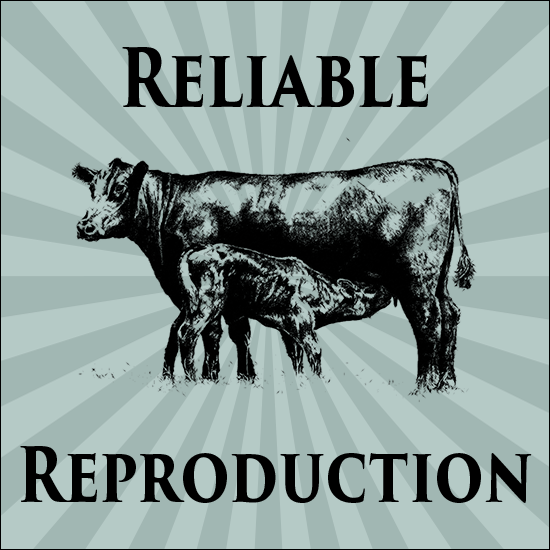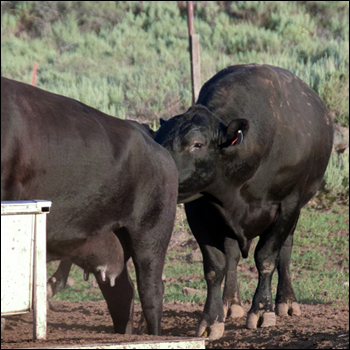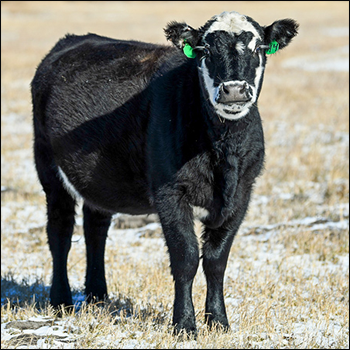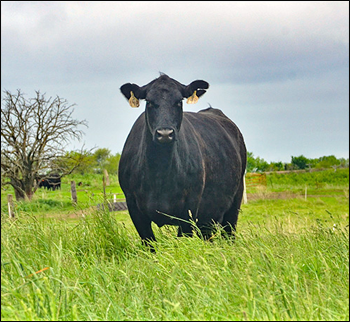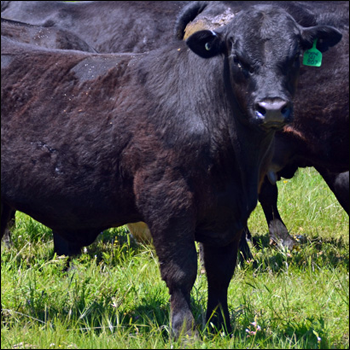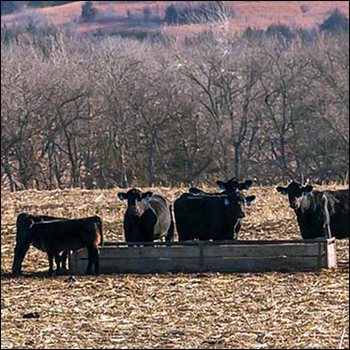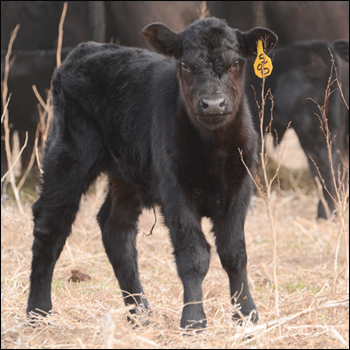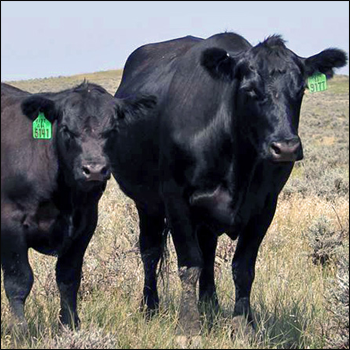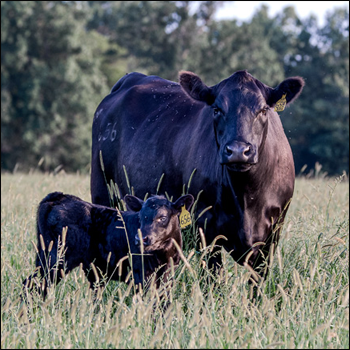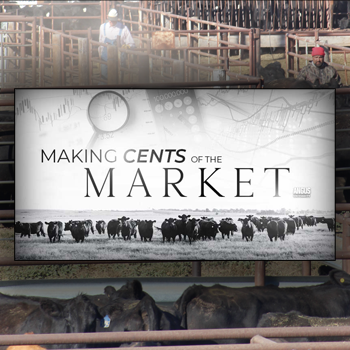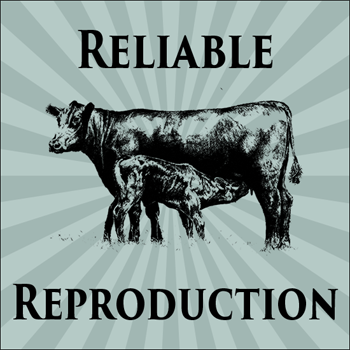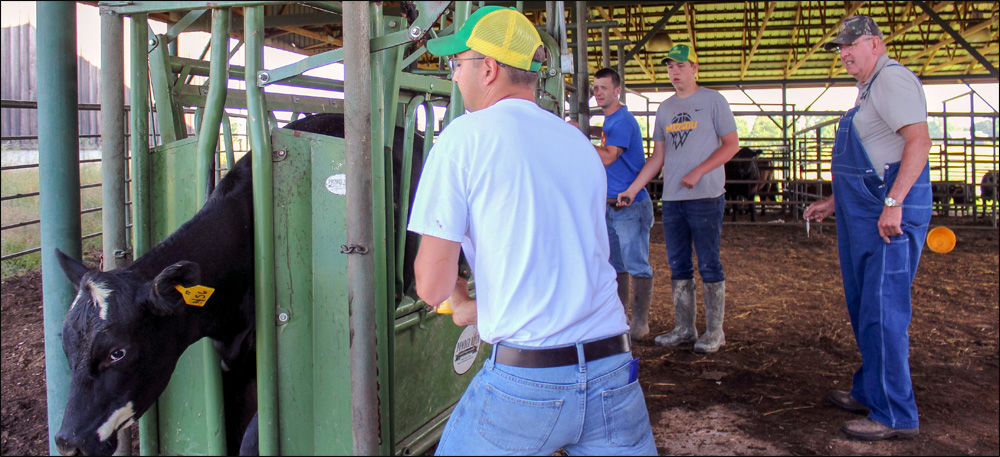
Prevent BRD in Cow-calf Herds
Several strategies to keep cows and calves healthy.
Bovine respiratory disease (BRD) is one of the most costly diseases for the beef industry, especially in feedlot cattle. It can also have an adverse effect in cow-calf operations. Ronald Tessman, Elanco cattle technical consultant, says the most important thing is to try to prevent respiratory disease rather than to treat it.
For cow-calf producers, management is more important than medicine. To keep cattle healthy, with a strong immune system, requires good nutrition, clean environment and minimal stress. If the pathogen load in the environment is too great or cattle are severely stressed, immune defenses may be overwhelmed.
“For prevention, make sure the cow herd is well-vaccinated and healthy. This requires a yearly respiratory vaccine booster close to calving (so the cow’s colostrum contains protective antibodies for the newborn calf). A modified-live virus (MLV) or killed vaccine will work; what you choose should depend on your situation, the immune status and vaccination history of the herd,” he says, recommending producers work with their veterinarian to select the appropriate vaccination program.
It’s also important to maintain proper nutrition throughout the year. It takes energy and the right balance and level of trace minerals to maintain a strong immune system. Without adequate nutrition — overall calories and the important micronutrients — cattle are more susceptible to disease, he explains. Some regions are short on selenium (Se) or copper (Cu), for instance. Calves with subsequent deficiencies may be prone to disease because both of those micronutrients are crucial for a healthy immune system.
Supplementation may be necessary. It’s important to know both what cattle need and how to provide it, Tessman says. If you don’t know the mineral status of soils and feeds, do some testing and work with your local extension services, veterinarian or nutritionist.
“There are many resources you can tap into. I can give broad recommendations, but those might not be the best for a specific producer’s operation,” he admits.
During drought, when feed is short, some folks wean calves early to have enough pasture for the cows, or they may supplement with hay or other feeds.
“The important thing is maintaining an adequate plane of nutrition throughout development of the calf,” says Tessman, referring to development in utero and once on the ground. It’s important to have a good vaccination program for cows and calves to maintain good health.
“I tend to believe that ‘less is more’ in some situations,” he says. “If we stack a bunch of vaccines, especially at the same time, it can be hard on them. We must try to determine when to give vaccines most appropriately.”
It is important to know your main problems and how to prevent them if possible. Tessman says some bugs, like clostridia, are important challenges for some herds, making it necessary for them to vaccinate early in life for things like blackleg or enterotoxemia in baby calves.
If a calf starts out slow and has an episode of toxic gut infection caused by Clostridium perfringens or scours from rotavirus or coronavirus, that calf will be more vulnerable to respiratory disease. Calves with internal parasites are also compromised.
“When I was at the University of Missouri, whenever a calf came to the vet school with respiratory disease, we’d always do a fecal check for worms, and they always had a load of internal parasites,” he shares. “The point is not internal parasites, but the fact that many diseases occur together. Anything we can do to benefit the calf for overall health is important.”
Tessman recommends getting two doses of MLV vaccine into calves before weaning and shipping.
“We can give calves a respiratory vaccine in the first 60 days of life (branding age), and it may not do much then, but it primes the immune system,” he says. “Then when we give another shot at weaning age, it acts as a booster.”
Work with your vet to figure out a program for your operation and overall health program.
Editor’s note: Heather Smith Thomas is a cattlewoman and freelance writer from Salmon, Idaho. Photo courtesy USDA.

Angus Proud
In this Angus Proud series, Editorial Intern Jessica Wesson provides insights into how producers across the country use Angus genetics in their respective environments.
 Angus Proud: Scott Sproul
Angus Proud: Scott Sproul
Oklahoma operation learned wisdom of moving calving season to better suit their marketing needs.
 Angus Proud: Bubba Crosby
Angus Proud: Bubba Crosby
Fall-calving Georgia herd uses quality and co-ops to market calves.
 Angus Proud: Jim Moore
Angus Proud: Jim Moore
Arkansas operation retains ownership through feeding and values carcass data.
 Angus Proud: Les Shaw
Angus Proud: Les Shaw
South Dakota operation manages winter with preparation and bull selection.
 Angus Proud: Jeremy Stevens
Angus Proud: Jeremy Stevens
Nebraska operation is self-sufficient for feedstuffs despite sandy soil.
 Angus Proud: Dave Rutan
Angus Proud: Dave Rutan
Angus breeder gets the most out of his bull investment by partnering with opposite calving-season operation.
